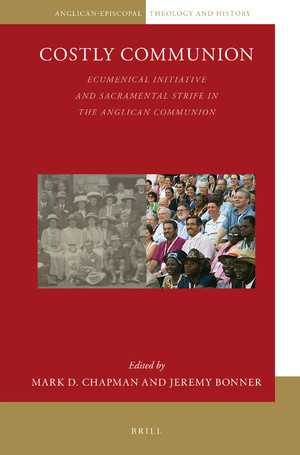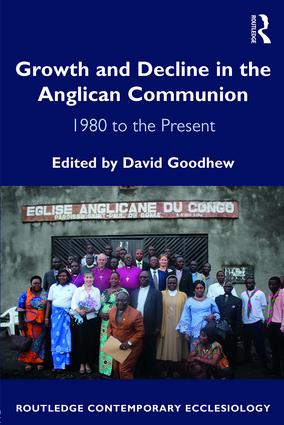The Work Goes On, The Cause Endures: Diocese of Pittsburgh (Southern Cone) Convention, November 7, 2008
With apologies to Teddy Kennedy almost thirty years ago, the second day of the special convention convened today to reelect Robert William Duncan as Bishop of Pittsburgh. "We've all been waiting so long," declared Christopher Leighton, rector of St. Paul's, Darien (Connecticut), a member of Trinity School for Ministry's first graduating class, who headed one of three visiting delegations from parishes outside Pittsburgh, and most of those present undoubtedly agreed.
Convention delegates agreed unanimously to make their selection by paper ballot. Prior to reading aloud the relevant statutes, the Chancellor quipped that it had been suggested "that we read this responsively by whole verse." Gladys Hunt Mason of St. Stephen's, McKeesport (a parish that has opted not to realign) presented the report of the nominating committee, which "unanimously and with great joy" recommended Bob Duncan for the position. There being no nominations from the floor, the Veni Creator Spiritus was sung and the ballot cast. It was announced that Bob Duncan had received 78 of 79 clerical ballots (one was invalid) and 100 of 100 lay ballots - blessed unanimity! Bishop Scriven read aloud a letter from Primate Gregory Venables commending the election as a "positive and significant step in the advance of the Gospel." Did the bishop-elect accept his election? Standing Committee President David Wilson inquired. "I have a few things to say," the bishop-elect replied.
He did indeed. After thanks to the Standing Committee for the 50 days (take note) that they had stood guard in his absence and to the diocesan staff, +Bob brought his wife Nara up on stage and commended her to our prayers. Given the Bob Duncan buttons that had made an appearance after his deposition, he suggested an updated version inscribed "He's Back!"
He spoke of the past, most especially of John Kerfoot, the first bishop of Pittsburgh who strove for reconciliation at the first post-Civil War General Convention, but also of the future. There is no time to wait to recover from recent traumas, he insisted, but rather we must get on with the mission. At the 1995 convention that elected him bishop, so many spoke of the extraordinary sense of the presence of the Holy Spirit, even when the diocese had been terribly divided. "We're not divided any more . . . we're free and without excuse not to do mission. Will you join me in the mission? Are you willing to do it?" He invited all those willing so to commit to rise. When all did, he observed quietly: "Then I consent."
There followed presentations both from the new parishes admitted in October and from some of the outside observers. The latter included Anglicans from Arkansas, Connecticut, Georgia (Christ Church, Savannah), New York, North Carolina, Ohio and Virginia as well a our "sister congregation" at Christ Church, Grove Farm. What we're doing, the Bishop went on, carries a cost, as witness the Pittsburgh priest recently expelled from Connecticut for voting in favor of realignment, but it served as a beacon for Christians throughout the world. Indeed, Archbishop Donald Wuerl of Washington (the former Catholic Bishop of Pittsburgh) had called him just before the convention to let Duncan know he would be praying for him.
Jenni Bartling, overseer of new church plants, spoke of how she had felt "postpartum blues" on behalf of her new congregations who had received only cursory attention in October. The four new congregations and three other plants over the past seven years testified that "moving forward in mission" was not empty rhetoric in Pittsburgh and the congregational leaders echoed her sentiments. From Seeds of Hope, Bloomfield a reminder that if you want families and children in your congregations you need to do child and youth ministry. From Grace Anglican, Slippery Rock, an emphasis on the need for constant prayer, which could turn a community of eight into a congregation of 150, most of them tithing and 40 percent organized in cell groups, and ten people considering ordination (five of them since the realignment vote). From Charis 247, Coraopolis, a reminder of the need to build community relationships (Practice, Pray and Partner). Finally, from Somerset Anglican Fellowship - this I really liked - a reminder that it is possible to leave everything except the people and still grow. "Getting rid of the building has turned out to be a blessing in our case," declared their spokesman and they still wish the 20 percent of the congregation who opted to remain with TEC well and continue to pray for their spiritual health and well-being.
And then the outsiders. Christopher Leighton from St. Paul's, Darien, where the renewal movement had some of its earliest beginnings, noted that his congregation was currently engaged in planting two new Anglican congregations and thanked his former diocese for its leadership. Art Ward from St. Bartholomew's, Tonawanda, New York, spoke from the perspective of a congregation who chose to leave everything behind and noted the "gracious" behavior of their reappraising bishop on the issue. This had been the year to choose, he said, and if staying was not an option, neither was litigation. Finally David Drake of Holy Trinity, Raleigh, North Carolina: "People who are wounded can still preach the Gospel . . . I had never seen people come to Christ in a church before."
Given the asides that had been dropped throughout these presentations, Bishop Duncan at one point took the stand to address the question of a new province. It was "very near" he said, and recognition might come as early as December. Certainly, it is hoped that a draft constitution will be presented at the December meeting of the Common Cause Partnership. Proceedings were closed with Geoff Chapman introducing a Sense of the House resolution that parishes and diocesan bodies prayerfully consider the Jerusalem Declaration as a standard of faith to be adopted at the next regular diocesan convention, should delegates so approve. On that note convention was adjourned with delegates admonished to sign the testimonials on Bishop Duncan's behalf required by the Province of the Southern Cone.









